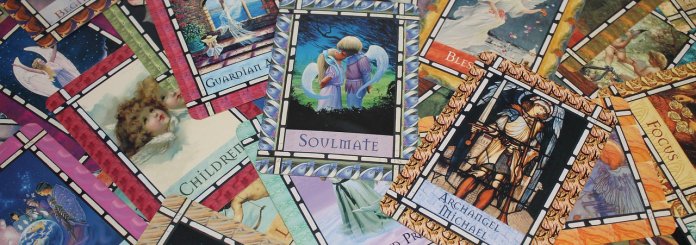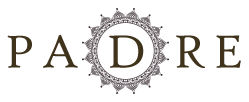What are Angel Cards?

You’re probably familiar with Tarot cards, and maybe you’re familiar with Oracle cards, but have you heard of Angel cards? All of these card types serve a similar function: they allow us to channel our spiritual energy into the deck to search for answers.
However, each one offers something unique, and so to understand the role of Angel Tarot cards, we’ll have to take a look at each. We’ll start by exploring the basics of Tarot cards, then we’ll briefly mention Oracle cards, before finally considering the function of Angel cards.
Table of Contents
- Tarot Cards
- What is the difference between tarot and oracle cards?
- Oracle Cards
- What are the angel cards?
- Reading Angel cards
Tarot Cards
Tarot cards are probably the most common of all the divination card types. A standard deck will include 78 cards, of which 22 of these are known as the Major Arcana and 56 are known as the Minor Arcana.
Do you want to know more about your Guardian Angel and get a FREE ANGEL READING? Just fill out this form, please:
The latter of these card types is further divided up into suits:
- Swords;
- Cups;
- Pentacles;
- Wands.
Each suit has four Court cards: Paige, Knight, King, and Queen, but also ten numbered cards ranging from ace (one) to ten. A Tarot reading can serve any function as each question and each spread type changes the overall role of the cards.
For example, you might use a 12-month spread to plan how best to improve your spirituality over the next year.
Alternatively, you might use a 3-card spread to better understand why you haven’t met your true love yet, using each card as a representation of the past, present, or future.
What is the difference between tarot and oracle cards?
Due to the detailed imagery of Tarot cards, the meaning of each card can vary depending on the situation. However, they are considered to have standard meanings for their upright and reversed positions.
Not only that, but the cards themselves stay the same regardless of the deck (other than some minor changes).
For example, you’ll always have 78 cards and they will always have the same structure i.e. the Major Arcana are always the same, and the suits are divided up the same way. So, while the images or names of the cards may vary, they still carry the same meaning.
Oracle Cards
Oracle cards threw the structure of Tarot cards out of the window. Some people describe them as being a more open-ended and individual version of Tarot cards.
An Oracle deck can be used in the same way as a Tarot, but the cards themselves aren’t bound by any rules. You might have 12 cards, 30 cards, 78 cards, or even more.
The images themselves could be incredibly detailed or surprisingly simplistic. Some Oracle cards will include words or phrases, while some might include names or characters.
When it comes to Oracle cards, there is no limit at all. The cards can be entirely personal, based solely on your own life, or they can take inspiration from other decks, events, or people.
An Oracle deck could cover very specific aspects of life or the universe, or it can be left vague and open to wider ranges of interpretation. One of the reasons that people find Oracle cards so appealing is that they can design their deck from scratch.
For people who struggle with Tarot cards, possibly due to a lack of connection with the cards themselves, Oracle cards open new doors.
There will be a deep connection and intimacy between you and the cards that are yours by design. So, how do Angel cards fit into all of this?
What are the angel cards?
Arguably, Angel cards are a type of Oracle card: one with a rather specific theme. They are similar to Tarot cards in nature and purpose, but the individual cards carry unique meanings and images. Angel cards, as you’ve probably guessed from the name, focus on angels.
While the theme is specific, it’s still largely open to creative input and variation. An Angel deck might simply contain popular or individual angels or Archangels, but they can also carry messages that angels have brought to the world.
Most Angel Tarot cards will contain an image of an angel, their name, and then a phrase or sentence that describes the role of this angel in the universe. One of the key differences between them and Tarot cards is that Tarot can be positive or negative.
There aren’t “bad” cards, so to speak, but cards can carry messages that highlight a negative aspect of your life, even though the purpose is often to guide you away from it.
Angel decks, on the other hand, tend to be exclusively positive. When a negative situation is mentioned, it usually comes with positive affirmations or outcomes.
Reading Angel cards
You still similarly use these cards to other divination cards. However, there are some differences. With Tarot cards, even though you can choose from a variety of card spreads, the readings are typically viewed as being slightly more rigid.
Oracles cards take a freer approach and allow you to ask any type of question or simply explore the cards for certain energies. Angel cards are similar to the latter as you can essentially read in any style you choose, and for any purpose.
Some people will choose to meditate before a Tarot or Oracle card reading. This helps clear your mind and prepare your energy. You can use this approach with Angel cards, but many people find that saying a prayer works just as well, if not better.
For example, you could pray to the Archangel Gabriel and ask for help in understanding what the cards are communicating to you. Alternatively, you could pray to your Guardian Angel and simply ask for guidance and help when carrying out your reading.
- Learn more on how to shuffle Tarot cards
The reading itself and how it is carried out will be entirely your decision to make.
You could use one of the more popular spreads from Tarot cards e.g. a 3-card spread, or a one-day spread. Another option would be tapping into your intuition during the reading and simply selecting the number of cards that you feel is right.
You might find that your angels guide you toward the answer to a question that you hadn’t even considered asking.

